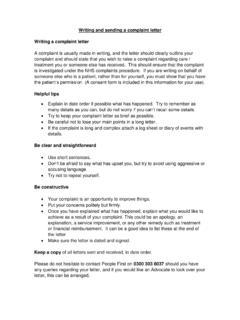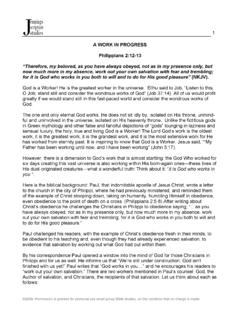Transcription of If you're going to ride enduros, you have to know …
1 If you're going to ride enduros , you have to know the basics By Paul Clipper Trail Rider Magazine You can ride enduros without timekeeping. There is no rule that says you have to have a clock, odometer, computer, roll chart, whatever, on your handlebars. If you want the fun of just paying for a real challenging trail ride , then by all means enter an enduro and just ride . And I will forever defend your right to do just that. However, if you want to get serious about enduros and try your skill at maybe doing good in them, even so much as winning a trophy, you're going to have to learn how to timekeep. Timekeeping is the basic art that turns enduros from just another motorcycle "race" into a thinking man's game (or thinking women's game, we don't want to be sexist here).
2 The ability to use timekeeping and understand enduros completely will open up a whole new world of experience to you as an off-road rider, and you may find it one of the most interesting things you have ever attempted. When I first decided I was going to enter and enduro, it was a Big Deal. I had a lot of respect for enduros and enduro riders, and as a trail rider I had studied everything I could learn about enduros from whatever was published at the time. Dirt Bike magazine had printed a one-shot magazine, called The Enduro Rider's Handbook, and I remember Cycle magazine, of all people, had a scholarly article on timekeeping theory in one issue. These two sources had lit a fire under me, and by the time I actually landed on the starting line of an enduro (Stumpjumper enduro, 1974 I believe) I really did understand a lot about timekeeping.
3 I actually kept time perfectly for miles, and then they ran us into the first swamp and, as the saying goes, the rest is history. Truthfully, I spent the rest of the day trying to stay within my hour, but I knew I was close to houring out, knew exactly how late I was, and maintained an understanding of just exactly how bad I was doing as the course pounded the living hell out of me. I wound up finishing that first enduro, and after that I was hooked. In the many years following I had ample opportunity to hone my skills, and learn far more about timekeeping than any normal person really needs to know . I was fortunate enough to get a job "in the industry" and wound up meeting the experts at the time, who were also my heroes of the time, people like Dick Burleson, Jack Penton, Dane Leimbach, and more.
4 We'd always talk shop, and I'd learn how they attacked the problem of keeping time in enduros . This just fueled the mania, and the ultimate result was I turned into a much better timekeeper than I was a rider. Basically, I always knew how late I was. As you can imagine, this had a profound affect on my results. Good thing I knew how to write. So what this article will be is a look at basic, cheap timekeeping for the rank beginner. Next month, we'll have an article on advanced timekeeping, where we'll talk about the finer points of riding enduros . Finally, in a third article we'll talk about computer timekeeping, if we need to, and then if there are any questions left we'll try to answer them.
5 As I've done with my own riding career, I went out and asked a lot of questions of good expert riders like Kevin Hines, randy Hawkins and others, and a lot of what you're about to read also comes from them. Basically, if you ever thought you'd like enduro riding, stick around and read on. This is where it starts getting interesting. Step One: know the Rules We asked Randy Hawkins what he would recommend to new riders, and he didn't hesitate to answer. " know the rules!" he said, "The first thing a new rider should do is get a rule book for the organization he's going to start riding in, and learn everything about how the enduro should be set up. The rule book will tell you what kind of checks there are, where the possible check locations might be, about resets, free time, everything.
6 Without a doubt, knowing the rules is the best place to start." We couldn't agree more, and we also can't over-emphasize this. Basically, for the region we're riding in, there are two different kinds of rules used in enduros , AMA rules and Brand-X rules. Generally, AMA rules are far more complicated and it seems like each region varies the interpretation of AMA rules somewhat, so it pays to get a rule book and study it. From it you will learn such things as check placement, which is very, very important. For example, in basic AMA rules checkpoints can't be closer than three miles apart. Right there, you know that every time you hit a checkpoint you then have three miles of riding where a check is not in AMA rules that usually means ride as fast as you can.
7 There is also the "two before, three after" rule, that says you can't have a check closer than two miles before a gas stop or within three miles after. But note also that this does not apply to a "gas available," which is not a gas STOP, so it doesn't conform to the two before, three after rule. A checkpoint can be placed anywhere around a gas available. If you ride in the NETRA region, you'll have to know Brand-X rules as well as AMA rules. Brand-X is an interesting variation of enduro rules that is actually quite fun and very fair. With Brand-X, you are scored check-to-check. Say you're riding on minute 20, and you come into the first check four minutes late. When you leave the check, your number is now the number you arrived on, so you're now riding on 24.
8 This means no matter how late you arrive at a check, you leave it on time, or nearly on time if you dawdle past the flip of the cards. Also, Brand-X has no two before, three after, or three mile spacing rule. Under Brand-X rules checkpoints can be placed anywhere on the course. As you can imagine, there are many rules governing all the action that takes place on a enduro course, and it is extremely important to know them all. Without a firm knowledge of the rules, all you'll be doing is lurching along, alternately chasing like mad and then practically dog-paddling following the people on your minute, with no clue of what's going on, and believe me it's a lot more fun to know why you're doing what you're doing.
9 Get a rule book, read it, and if you don't understand what they're talking about, seek out the help of a more knowledgeable friend or club member and ask questions. Real Timekeeping Okay. So we're going to assume that you know how to enter an enduro, know what to wear, know how to prep your bike so it runs all day. We're not going to get into how you're going to get more fuel on the course (you'll need more than one gas can), or how to carry Yoo-Hoo and turkey jerky in your fanny pack (sorry Charlie). You want to know about timekeeping, so we're going to tell you the simplest method. In the next article we'll get into the more complicated stuff. You are going to need three different pieces of equipment.
10 You will need an odometer, a roll chart holder, and a clock. The odometer you use may be the one that came on your bike, or you may choose to invest in an electronic odometer. The electronic ones are nice; there's the AutoCal from ICO, and then the odometers built into the enduro computers, which we're not going to talk about right now. Basically, you need something that will count miles, and be resetable by tenths, and is reliable. A roll chart holder you've seen, if you don't already have one for riding dual sports or turkey runs. It's a little handlebar-mounted box with knob-driven shafts sticking out of the top and bottom of one side, with a removable plastic window on top.






